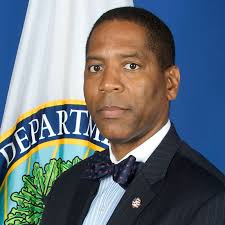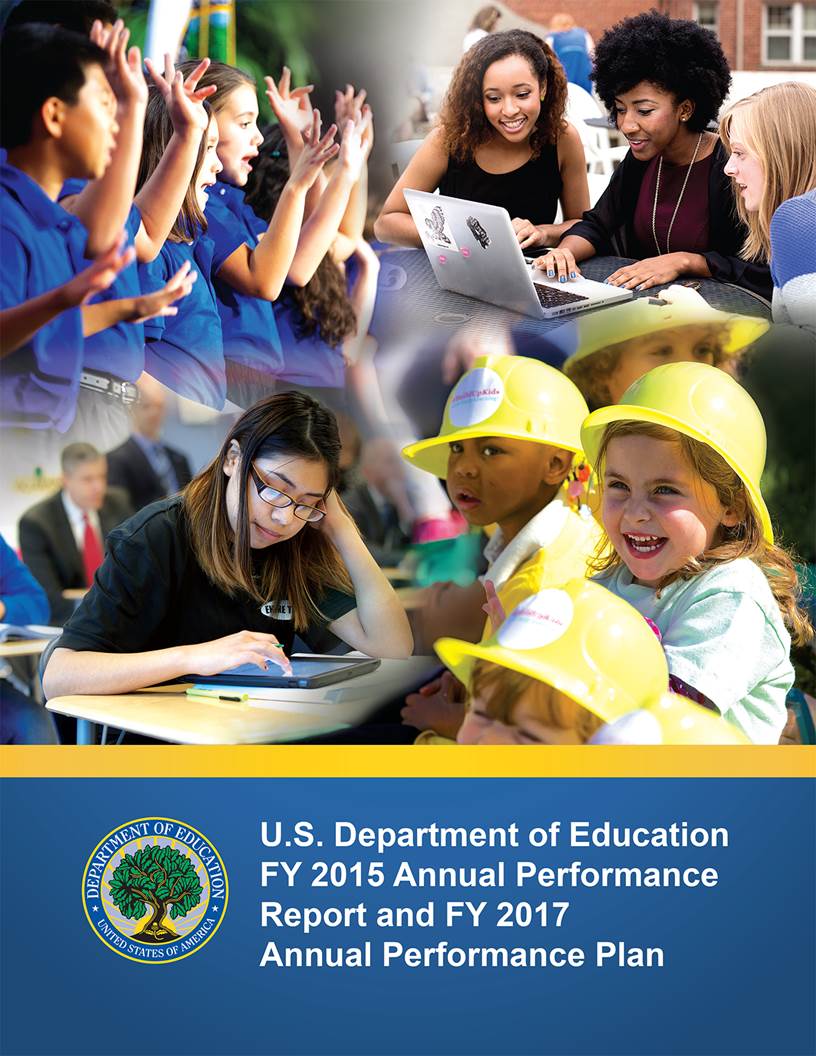- Home
- Agencies
- Department of Agriculture
- Department of Housing and Urban Development
- General Services Administration
- Department of Commerce
- Department of the Interior
- National Aeronautics and Space Administration
- Department of Defense
- Department of Justice
- National Science Foundation
- Department of Education
- Department of Labor
- Office of Personnel Management
- Department of Energy
- Department of State
- Small Business Administration
- Environmental Protection Agency
- Department of Transportation
- Social Security Administration
- Department of Health and Human Services
- Department of the Treasury
- U.S. Agency for International Development
- Department of Homeland Security
- Department of Veterans Affairs
- Goals
- Initiatives
- Programs
Primary tabs
FY 16-17: Agency Priority Goal
Increase enrollment in high-quality state preschool programs
Priority Goal
Goal Overview
GOAL OVERVIEW
Children who attend high-quality early learning programs do measurably better in school than their peers who do not attend such programs, yet there continues to be a huge unmet need for public preschool. In April 2015, ED released A Matter of Equity: Preschool in America showing that of approximately 4 million 4-year olds in the United States, nearly 2.5 million are not enrolled in publicly funded preschool programs and even fewer are enrolled in the highest-quality programs. Significant new federal and state investments in high-quality early education are necessary to help states, local communities, and parents close the school readiness gaps between disadvantaged children and their more advantaged peers.
The Administration’s 2017 Budget renews President Obama’s call for universal preschool, supported by a 10-year, $75 billion proposal to expand access to high-quality preschool through a Federal-State cost-sharing partnership that would guarantee universal access to every 4 year old from low- and moderate-income families and create incentives for States to serve additional children from middle class families. The Budget is also seeking $350 million for Preschool Development Grants, which will be funded through the Department of Health and Human Services (HHS) and jointly administered by HHS and ED, consistent with the requirements of the Every Student Succeeds Act of 2015 (ESSA). In December 2014, eighteen states received PDG awards to improve or create new preschool slots for 4-year-old children, and are well underway serving children in their programs. In December 2015, grantees received their second year of funding, and Congress appropriated funding for their third year. Funding in fiscal year 2017 will support the fourth and final year of funding for the 18 current PDG grantees as well as initial implementation of the changes contained in the new ESSA law in order to better coordinate and expand early learning services for children and families. The two agencies will continue to work closely together to jointly administer the program and will develop a Memorandum of Understanding that includes joint staffing of Preschool Development Grant implementation and ensures a smooth transition for all grantees. In addition, the ED/HHS jointly-administered Early Learning Challenge (ELC) grants continue to provide improvements in quality in twenty grantee states.
KEY BARRIERS AND CHALLENGES
In December 2015, Congress passed the Every Student Succeeds Act (ESSA), which reauthorized the Elementary and Secondary Education Act (ESEA). Under the reauthorized law, funding for the program is appropriated to HHS, and the program is administered jointly by ED and HHS. Per the statute, the purpose of the program is to coordinate early childhood education programs in a mixed delivery system of providers including schools, licensed child care centers, Head Start, or other community-based organizations that will prepare low-income and disadvantaged children to enter kindergarten. The statute specifies that one way to accomplish this goal is by improving the participation of children in a mixed delivery system and increasing the quality of the programs in this system. As a result, both agencies will work together to award grants that focus on coordination, as well as expanding access to high-quality preschool for children from low- and moderate-income households.
EXTERNAL STAKEHOLDERS
- Congress
- Governors
- State educational agencies (SEAs) or in some states, the early learning agency
- State Advisory Councils
- Local Educational Agencies (LEAs, and their Superintendents and Principals)
- Early educators
- National Institute for Early Education Research (NIEER)
- National Association of Early Childhood Specialists in State Departments of Education (NAECS-SDE)
- National Association for the Education of Young Children (NAEYC)
- Council for Exceptional Children, Division of Early Childhood (DEC)
Strategies
IMPLEMENTATION STRATEGY
- On an ongoing basis, continue to work with Preschool Development Grants Technical Assistance (PDG TA) and the Center on Enhancing Early Learning Outcomes (CEELO) in supporting all states to expand high-quality preschool programs.
- By November 1, 2016 jointly submit with HHS a report to Congress that includes an interdepartmental review of all early learning and care programs for children less than 6 years of age, and makes recommendations for streamlining and improving early learning.
- By November 31, 2016, work through the Interagency Policy Board on Early Learning to raise awareness about the quality of early learning programs by publishing and promoting policy statements on health promotion and early technology, as well as a toolkit on 2GEN approaches for Federal, State and local government staff. In addition, expand the IPB to include additional Federal agencies with programs that support quality improvements in early learning programs.
- By December 1, 2016, work with the National Institute for Early Education Research (NIEER) and NCES to expand data collection to improve understanding of both overall enrollment in preschools and enrollment in high-quality programs.
- By December 14, 2016 work with IES to host the first annual meeting of the Early Learning Network of researchers and related external partners to look at P-3 quality and implementation and develop a new quality assessment tool.
- By December 30, 2016, work with the OSEP-funded Early Childhood Personnel Center to have 30 State teams enroll in their Leadership Institutes, which provides leadership training to 619 Coordinators on systems change and how to be included as a decision-maker in early childhood initiatives within their State.
- By December 30, 2016 work with the OSEP-funded Early Childhood Technical Assistance Center to develop and disseminate resources and materials on using the Division of Early Childhood Recommended Practices within preschool classrooms.
EXTERNAL FACTORS THAT ED CAN AND CANNOT INFLUENCE
External factors that ED can influence:
- Public awareness about the research and unmet need for high-quality preschool,
- Actions by P-12 stakeholders, and
- Champions in Congress and state legislatures and state governors for early education.
External factors that ED cannot influence:
- State and local budgets
- Political climate and elections
Progress Update
By February 29, 2016 all PDG state grantees had submitted their Annual Performance Reports (APRs), describing their accomplishments and challenges. PDG grantees reported, among other data, on the number of 4-year-olds served in the high-quality preschool programs and how they worked to meet the twelve elements of quality required by the program. In addition, they reported on the number and percentage of children with disabilities served in inclusive settings and the number and percentage served overall in the state’s preschool program. OEL staff is working with PDG TA to finalizing the Annual Progress Report and the 18 individual state APRs to be published by November, 2016.
On August 1 during Secretary King's visit to two ELC states (CO and DE), the U.S. Departments of Education and Health and Human Services released the 20 individual state ELC Annual Performance Reports (APR) and Progress Report looking across states. http://www2.ed.gov/programs/racetothetop-earlylearningchallenge/performa...
On August 15, announced that ED and HHS were funding the Technical Assistance Center on Positive Behavioral Interventions and Supports to implement the Pyramid Equity Project with Preschool Development Grant national activity funds. The Pyramid Equity Project will develop and disseminate an effective approach for the prevention of suspension, expulsion, and discipline disparities in early learning programs. The Pyramid Equity Project will partner with Preschool Development Grantees, Clifton Early Learner Academy in Clifton, NJ, and Cambridge Early Learning Center in Antioch, TN, to establish demonstration sites that can serve as national models for addressing disproportionate discipline practices in early learning programs and eliminating exclusionary discipline practices.
In August, Education Secretary John B. King and Health and Human Services Secretary Sylvia Burwell released a joint letter supporting the Departments' joint Policy Statement on Family Engagement. http://www2.ed.gov/about/inits/ed/earlylearning/files/dcl-joint-letter-o...
The 20 individual state ELC APRs and Progress Report were posted September 1, 2016. The 2015 APRs for the 20 states show that nearly 267,000 children with high needs are enrolled in state preschool, a 263% increase since the beginning of the grants. Nearly 243,000 children with high needs are enrolled in child care, an 86% increase. Nearly 211,000 children with high needs are enrolled in Head Start, a 189% increase.
On September 7 hosted a webinar with HHS on preparing a high-quality workforce to support inclusion in early childhood programs. http://www.aucd.org/template/event.cfm?event_id=7867&id=16
On September 15 during the back to School Bus Tour, ED released a fact sheet that showed 28,000 additional children were enrolled in high-quality preschool programs through PDG in the first cohort during the 2015-2016 school year.
On September 23, 2016 ED released ESSA Title III Guidance – English Learners, which includes supports for preschoolers who are English learners. http://www2.ed.gov/policy/elsec/leg/essa/essatitleiiiguidenglishlearners...
On September 29, 2016, Ed released ESSA Schoolwide Guidance, which includes ways in which ESSA funds can be used to expand preschool. http://www2.ed.gov/policy/elsec/leg/essa/essaswpguidance9192016.pdf
ED and HHS continue to discuss drafting an MOU to describe how funds for PDG in FY17 under ESSA will be administered and plan for a smooth transition as directed in the law
To support States in enhancing the quality of services provided under Part C and Part B, section 619 programs, as well as other early learning programs that serve children with disabilities, the Office of Special Education Programs (OSEP) funds national technical assistance (TA) centers under Part D of IDEA. These centers have been meeting with OSEP on a monthly basis to ensure they are working collaboratively to meet States’ needs through building their capacity to improve their Part C and Part B, section 619 programs and services to increase outcomes for children with disabilities.
OSEP State Teams hold regular meetings with States and provide TA on implementing IDEA, including providing high-quality services to children with disabilities. They also provide TA to States on developing Phase III of their SSIPs, which will include specific strategies that States have implemented to improve the quality of services to children with disabilities. The OSEP-funded TA centers are also providing TA to States on developing Phase III of the SIPPs as well as developing resources for States.
Next Steps
- PDG: A minimum of $250 million is needed in the FY17 budget to fund Year 4 of the grants and National Activities. ED and HHS are working to create an MOU outlining how funds for PDG in FY17 under ESSA will be administered and plan for a smooth transition as directed in the law.
- ELC: Project officers will continue to monitor funding draw downs to ensure funds are spent in a timely manner and before the end of the grant period. The first cohort of nine out of the twenty funded states will finish their grants December 31, 2016.
- ED and HHS staff will continue to conduct monthly technical assistance/monitoring calls with the 18 PDG grantees and 11 ELC grantees in October, November, and December of FY 2017.
- PDG TA (the technical support provider for PDG grantees) and CEELO (the technical support provider for all SEAs) will continue to provide technical support for the 18 PDG grantees and ELC TA (the technical support provider for ELC grantees) will continue to provide technical support for 11 ELC grantees (cohorts 2 and 3) through individual support, professional learning communities and resources in October, November, and December of FY 2017. The OSEP-funded Early Childhood Technical Assistance Center is collaborating with PDG TA to provide technical assistance to 619 Coordinators in PDG states to support high-quality inclusion of preschool children with disabilities.
- CEELO will continue to provide supports to all states in expanding high-quality preschool in October, November, and December of FY 2017.
- ED and HHS will continue to identify, develop, and disseminate resources on inclusion in early childhood programs as part of a public awareness campaign on inclusion.
- PDG TA and the Early Childhood Technical Assistance Center will continue to support the implementation of a community of practice of 619 Coordinators who are in States with a PDG so that they can learn innovative strategies on working with programs to include children with disabilities.
- November 2016: Report on the number of four-year olds in high-quality preschool funded through PDG.
- January 2017: Release of IOM Study: Fostering School Success for English Learners.
- November 2016: Make continuation awards for year three of the PDG program.
- November 16-18, 2016: Convene ELC and PDG grantee states for the annual grantee meeting with teams of up to five persons from each state across state agencies and public-private partnerships to share promising practice and provide professional learning.
- December 21, 2016: PDG ends Year 2 of grants.
- December 2016: Make awards for Pay for Success Preschool Feasibility Study Program.
Expand All
Performance Indicators
Increase the percentage of children, especially children from low-income families, enrolled in high-quality preschool programs: Percentage of 4-year-old children enrolled in state preschool programs.
Increase the percentage of children, especially children from low-income families, enrolled in high-quality preschool programs: Number of state preschool programs meeting high-quality standards
Contributing Programs & Other Factors
CONTRIBUTING PROGRAMS
State preschool programs use multiple funding streams –
At ED:
- Title I, Title II, Title III, Title IV, Title V, Title VI
- IDEA Part B, Section 619
At ED and HHS (Joint Administration)
- PDG
- ELC
At HHS:
- Head Start
- Child Care Development Block Grant
Various Local and State funding
- State education dollars
- Early childhood education block grants
- City and county funds
- District funds
Other Funding
- Philanthropy contributions
- Business investments, including pay for success
For additional programs see Appendix D of the Department’s FY2015 Annual Performance Report and FY2017 Annual Performance Plan, available here: http://www2.ed.gov/about/reports/annual/2017plan/2015-2017-apr-app.pdf
No Data Available











